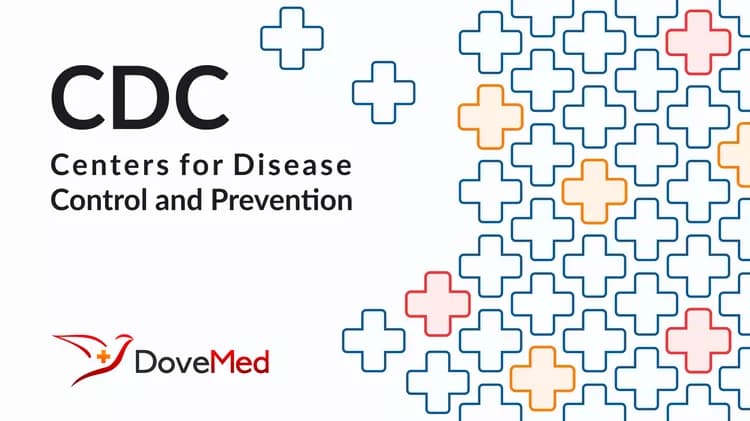
Despite Progress, Ongoing Efforts Needed to Combat Infections Impacting Hospital Patients
Despite Progress, Ongoing Efforts Needed to Combat Infections Impacting Hospital Patients
National and state data detail threat of healthcare-associated infections and opportunities for further improvements
What Patients Can Do: Six Ways To Be A Safe Patient.
On any given day, approximately one in 25 U.S. patients has at least one infection contracted during the course of their hospital care, adding up to about 722,000 infections in 2011, according to new data from the Centers for Disease Control and Prevention. This information is an update to previous CDC estimates of healthcare-associated infections.
The agency released two reports today – one, a New England Journal of Medicine article detailing 2011 national healthcare-associated infection estimates from a survey of hospitals in ten states, and the other a 2012 annual report on national and state-specific progress toward U.S. Health and Human Services HAI prevention goals. Together, the reports show that progress has been made in the effort to eliminate infections that commonly threaten hospital patients, but more work is needed to improve patient safety.
“Although there has been some progress, today and every day, more than 200 Americans with healthcare-associated infections will die during their hospital stay,” said CDC Director Tom Frieden, M.D., M.P.H. “The most advanced medical care won’t work if clinicians don’t prevent infections through basic things such as regular hand hygiene. Health care workers want the best for their patients; following standard infection control practices every time will help ensure their patients’ safety.”
The CDC Multistate Point-Prevalence Survey of Health Care-Associated Infections, published in NEJM, used 2011 data from 183 U.S. hospitals to estimate the burden of a wide range of infections in hospital patients. That year, about 721,800 infections occurred in 648,000 hospital patients. About 75,000 patients with healthcare-associated infections died during their hospitalizations. The most common healthcare-associated infections were pneumonia (22 percent), surgical site infections (22 percent), gastrointestinal infections (17 percent), urinary tract infections (13 percent), and bloodstream infections (10 percent).
The most common germs causing healthcare-associated infections were C. difficile (12 percent), Staphylococcus aureus, including MRSA (11 percent), Klebsiella (10 percent), E. coli (9 percent), Enterococcus (9 percent), and Pseudomonas (7 percent). Klebsiella and E. coli are members of the Enterobacteriaceae bacteria family, which has become increasingly resistant to last-resort antibiotics known as carbapenems.
Tracking National Progress
The second report, CDC’s National and State Healthcare-associated Infection Progress Report, includes a subset of infection types that are commonly required to be reported to CDC. On the national level, the report found a:
44 percent decrease in central line-associated bloodstream infections between 2008 and 2012
20 percent decrease in infections related to the 10 surgical procedures tracked in the report between 2008 and 2012
four percent decrease in hospital-onset MRSA between 2011 and 2012
two percent decrease in hospital-onset C. difficile infections between 2011 and 2012
“Our nation is making progress in preventing healthcare-associated infections through three main mechanisms: financial incentives to improve quality, performance measures and public reporting to improve transparency, and the spreading and scaling of effective interventions,” said Patrick Conway, M.D., Deputy Administrator for Innovation and Quality for Centers for Medicare & Medicaid Services (CMS) and CMS chief medical officer. “This progress represents thousands of lives saved, prevented patient harm, and the associated reduction in costs across our nation.”
The federal government considers elimination of health care-associated infections a top priority and has a number of ongoing efforts to protect patients and improve health care quality. In addition to CDC’s expertise and leadership in publishing evidence-based infection prevention guidelines, housing the nation’s healthcare-associated infection laboratories, responding to health care facility outbreaks and tracking infections in these facilities, other federal and non-federal partners are actively working to accelerate the prevention progress that is happening across the country. These initiatives are coordinated through the National Action Plan to Prevent Healthcare-Associated Infections and include CMS’ Partnership for Patients, CMS Quality Improvement Organizations, and the Agency for Healthcare Research and Quality’s Comprehensive Unit-based Safety Program.
State Data
The Progress Report looked at data submitted to CDC’s National Healthcare Safety Network (NHSN), the nation’s healthcare-associated infection tracking system, which is used by more than 12,600 health care facilities across all 50 states, Washington, D.C., and Puerto Rico. Not all states reported or had enough data to calculate valid infection information on every infection in this report. The number of infections reported was compared to a national baseline.
In the report, none of the 50 states, Washington, D.C., or Puerto Rico performed better than the nation on all four infection types tracked by state (CLABSI, CAUTI, and infections after colon surgery and abdominal hysterectomy). Sixteen states performed better than the nation on two infections, including two states performing better on three infections. In addition, 16 states performed worse than the nation on two infections, with seven states performing worse on at least three infections.
FY15 President’s Budget
Expanding upon current patient safety goals, the FY 2015 President’s Budget requests funding for CDC to increase the detection of antibiotic resistant infections and improve efforts to protect patients from infections, including those detailed in today’s CDC reports. Additionally the President’s Budget requests an increase for the National Healthcare Safety Network to fully implement tracking of antibiotic use and antibiotic resistance threats in U.S. hospitals.
To access both reports and to see the updated healthcare-associated infection data, see CDC’s website: www.cdc.gov/hai.
###
U.S. DEPARTMENT OF HEALTH AND HUMAN SERVICES
Related Articles
Test Your Knowledge
Asked by users
Related Centers
Related Specialties
Related Physicians
Related Procedures
Related Resources
Join DoveHubs
and connect with fellow professionals

0 Comments
Please log in to post a comment.